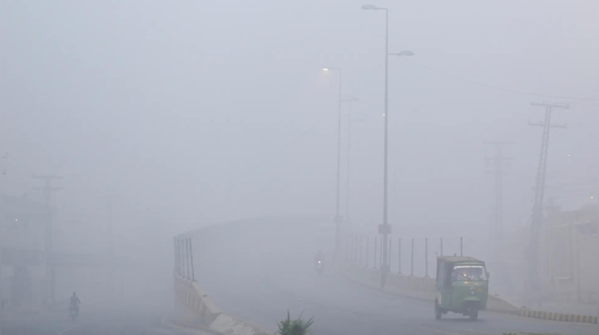- News
- World News
- Pakistan News
- Pakistan AQI over 2000: Apocalyptic smog blankets cover Lahore, Multan; force lockdowns
Pakistan AQI over 2000: Apocalyptic smog blankets cover Lahore, Multan; force lockdowns

Severe smog in Pakistan
Punjab province in Pakistan, especially Multan, faced extreme smog, with AQI levels surpassing hazardous thresholds. (Photo: Reuters)

Record-breaking AQI levels:
Multan reported an AQI of 2,135 on Friday morning, with PM2.5 levels at 947 µg/m³, 189.4 times the WHO safe limit. Later in the evening, AQI levels in Multan dropped but remained around 980, still three times above hazardous levels. (Photo: Reuters)

'Most polluted city'
AQI surpassed 1,000 in Lahore, designating it as the most polluted city globally. Strict bans on public access to parks, zoos, and monuments were enforced in Lahore and other major cities. (Photo: Reuters)

Restrictions on public places gathering
The Punjab government has implemented emergency measures to combat the severe smog, including closing parks, museums, and recreational sites until November 17 across several cities. A “smart lockdown” in Multan mandates market closures by 8 pm, enforces stricter controls on smoke-emitting vehicles, and cracks down on illegal waste burning and brick kilns. Additionally, public and private schools in 18 districts have been temporarily closed. (Photo: AP)

Health risks
Nishtar Hospital in Multan opened smog counters for emergency and OPD care due to rising health issues, though initially saw few patients. (Photo: AP)

Regulatory actions
Section 188 of the Pakistan Penal Code applied to violators, along with penalties for businesses and individuals disregarding environmental regulations. (Photo: AP)

Environmental control efforts
Measures include covering cargo trucks, advising children to stay indoors, closing polluting food outlets, and road closures across southern and central Punjab. (Photo: AP)

Violations despite risks
Despite restrictions, residents report children still playing outside, and many feel health effects, such as sore throats, due to the poor air quality.
(Photo: AP)








